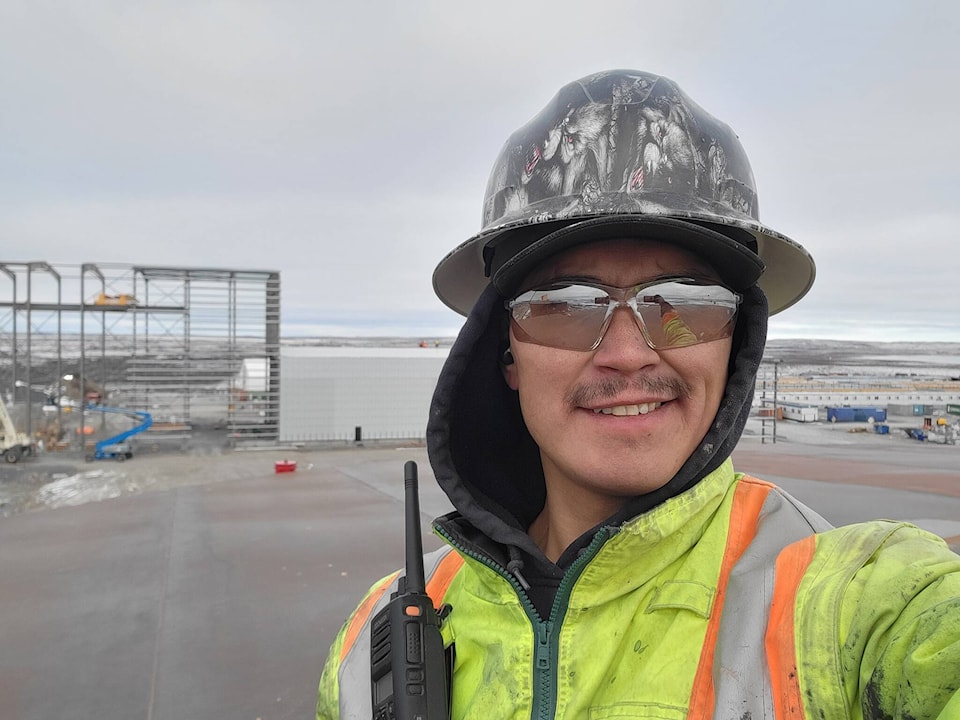Henry Ongahak loves his work in the mining sector, and strongly urges other young Inuit to consider similar careers.
“A hundred per cent, I recommend it,” the 27-year-old said from his job site on a remote patch of Nunavut’s Kitikmeot region. “It’s a good opportunity. I get to travel the world. It’s wicked.”
Ongahak, who was born in Yellowknife and raised in Bathurst Inlet and Kugluktuk, works as an underground development miner at B2Gold’s Goose project, the most advanced of five mineral claim blocks along an 80-km belt in Nunavut’s Back River region.
He started with the company in 2018, spurred by the “lack of job opportunities” in Kugluktuk. He has held his current position at the Goose project since late last year, when he was cleared for underground work – a professional breakthrough he said “felt very good.”
He has numerous responsibilities in his current role, but spends much of his 12-hour days running supplies like rebar and cable in and out of the mine with a boom truck, a type of mobile crane.
It’s tough work.
“The long days are challenging,” he said. “Having never been underground before and being new to that was kind of challenging too, having to learn all these new things.”
However, Ongahak prefers to focus on the positives of the job – and there are many, he contends.
“You’re out of the weather, out of the cold [when you’re underground],” he said, laughing. “That’s definitely a plus side. It’s a lot warmer.
“You work half the year too,” he added. “You get half the year off, which is another good plus side.”
When Ongahak finishes his 12-hour shifts, he returns to camp for some hard-earned downtime.
The food on site is “great,” he said.
“They feed you so good. You eat well here.”
He also enjoys spending time in the recreation room, where he often encounters people he knows from Kugluktuk, and other communities, such as Cambridge Bay.
“We hang out a lot,” he said. “We play some pool. The rec room here has pool and golf, and it’s a got a hunting game which is good too.”
Ongahak’s father also works at the site, and he savours the time they’re able to spend together during their downtime.
“There’s a gym here,” he said. “I’ve been taking my dad to the gym, getting him back into shape.”
Ongahak said he isn’t sure what his future with B2Gold holds, as he prefers to “go with the flow” when it comes to his career. However, that doesn’t mean he doesn’t have professional goals. One of his main areas of focus is doing everything he can to keep his job site safe.
“It is one of my goals to make this place a safer, better place to work and a better environment,” he said.
“Safety is a huge thing,” he added, noting that he fills out daily field level hazard assessment (FLHA) cards, which help make frontline workers aware of possible safety hazards on site.
“I’m also on the mine rescue team. There was a lot of training there,” he noted.
Ongahak remembers the moment he first became interested in underground mining work.
It was “years back,” he said, when he worked a few rotations at Hope Bay, a Kitikmeot gold property owned by Agnico Eagle.
“I’d drive by the portal every day, and I’d say, ‘Hey, I want to go work underground one day,’” he recalled. “Here I am working underground now.”
His advice to any young Inuit with similar interest in the mining industry is simple.
“If you get the proper training and the right guys to do the proper training with you, you will succeed,” he said. “Keep a positive mind and work hard to fulfill your goals.
“If I can do it, you can do it.”
